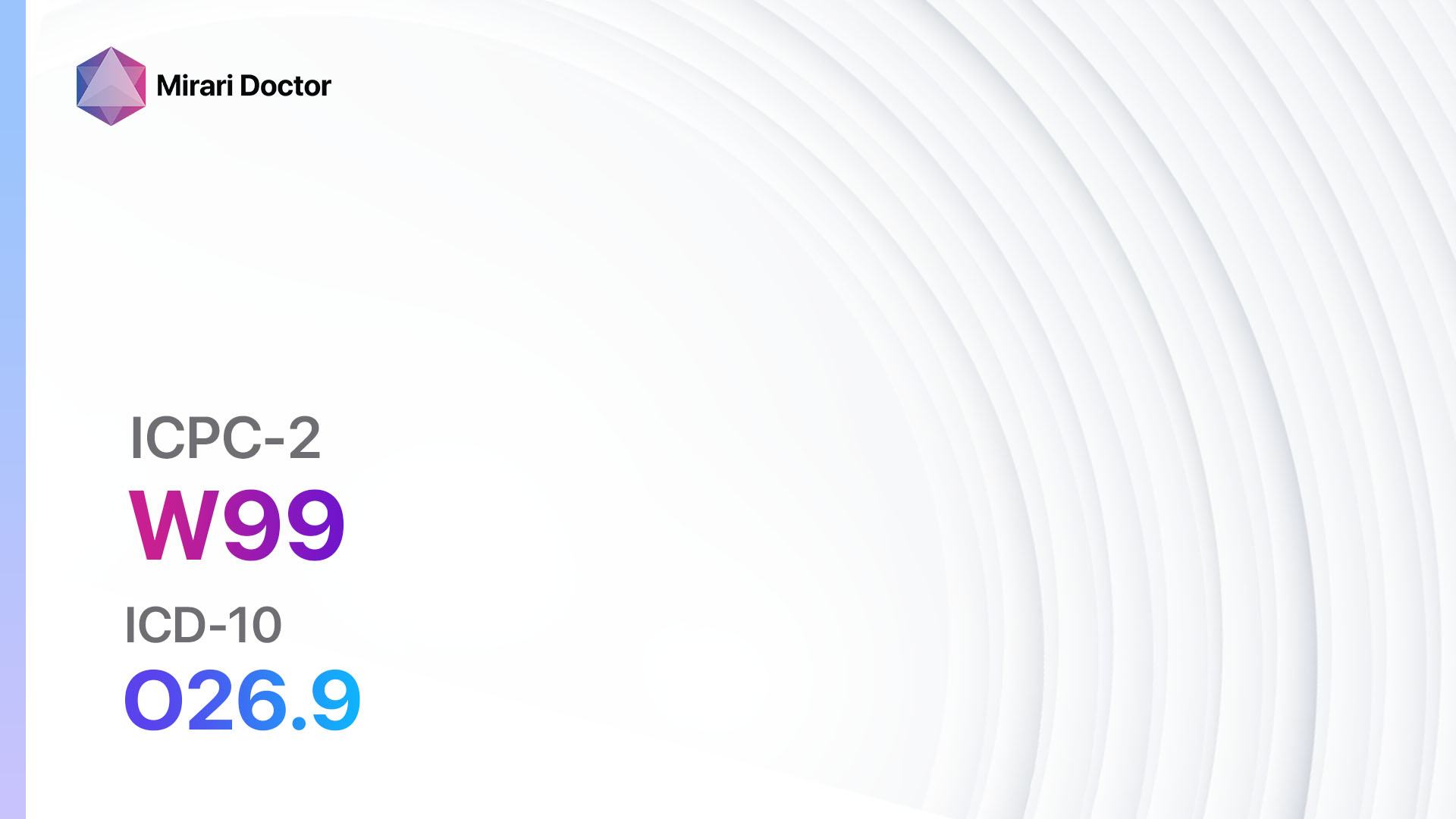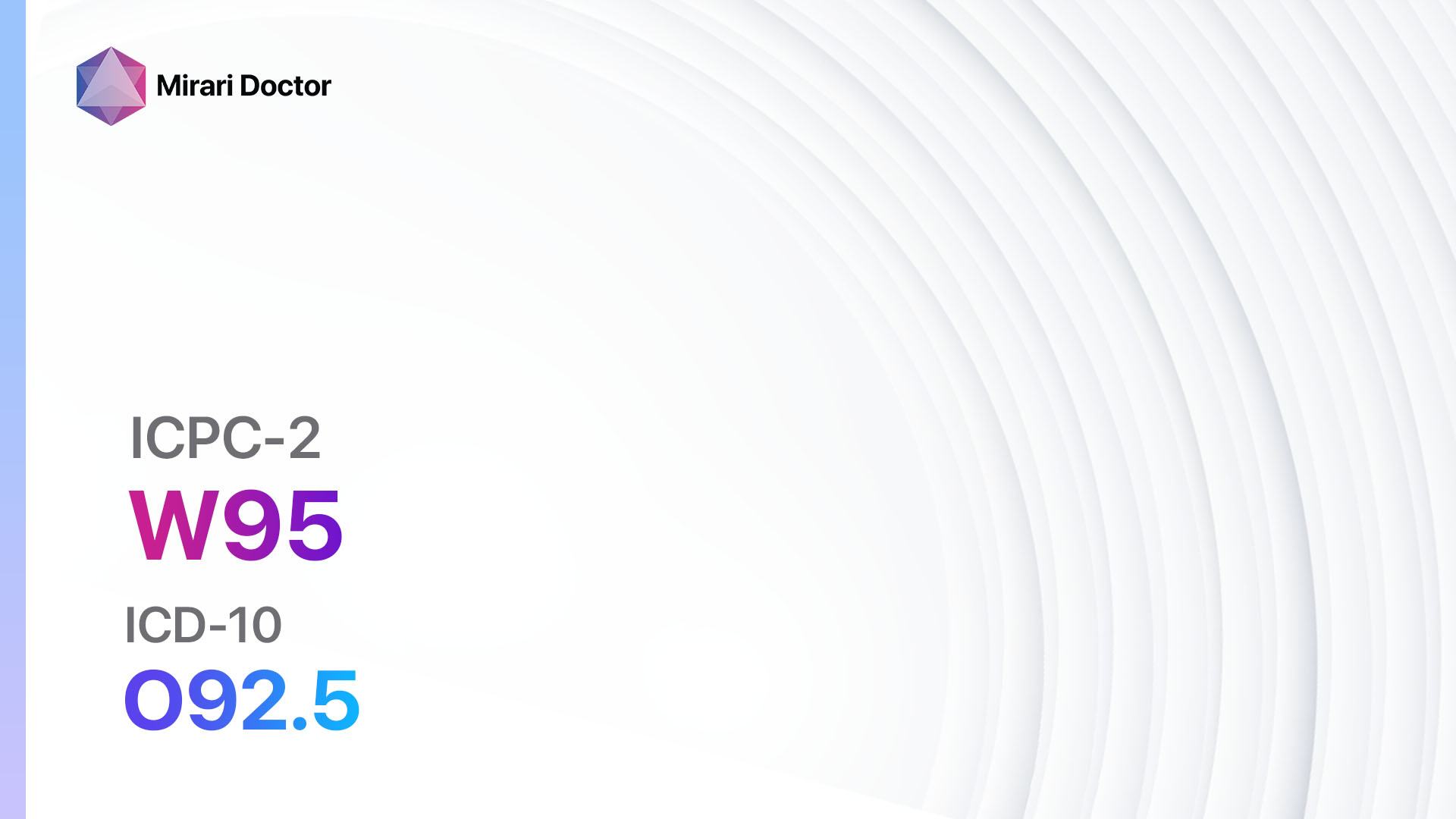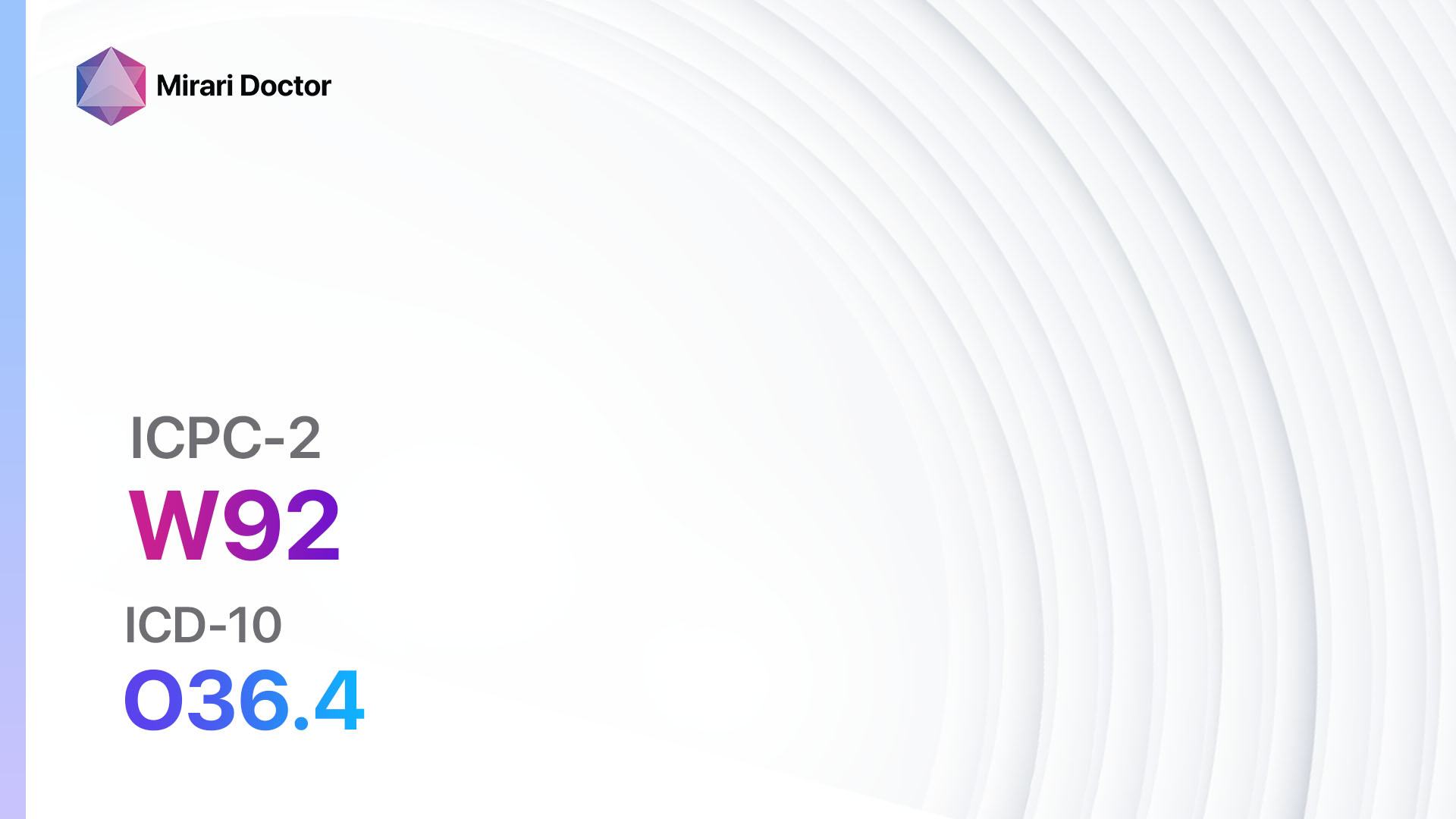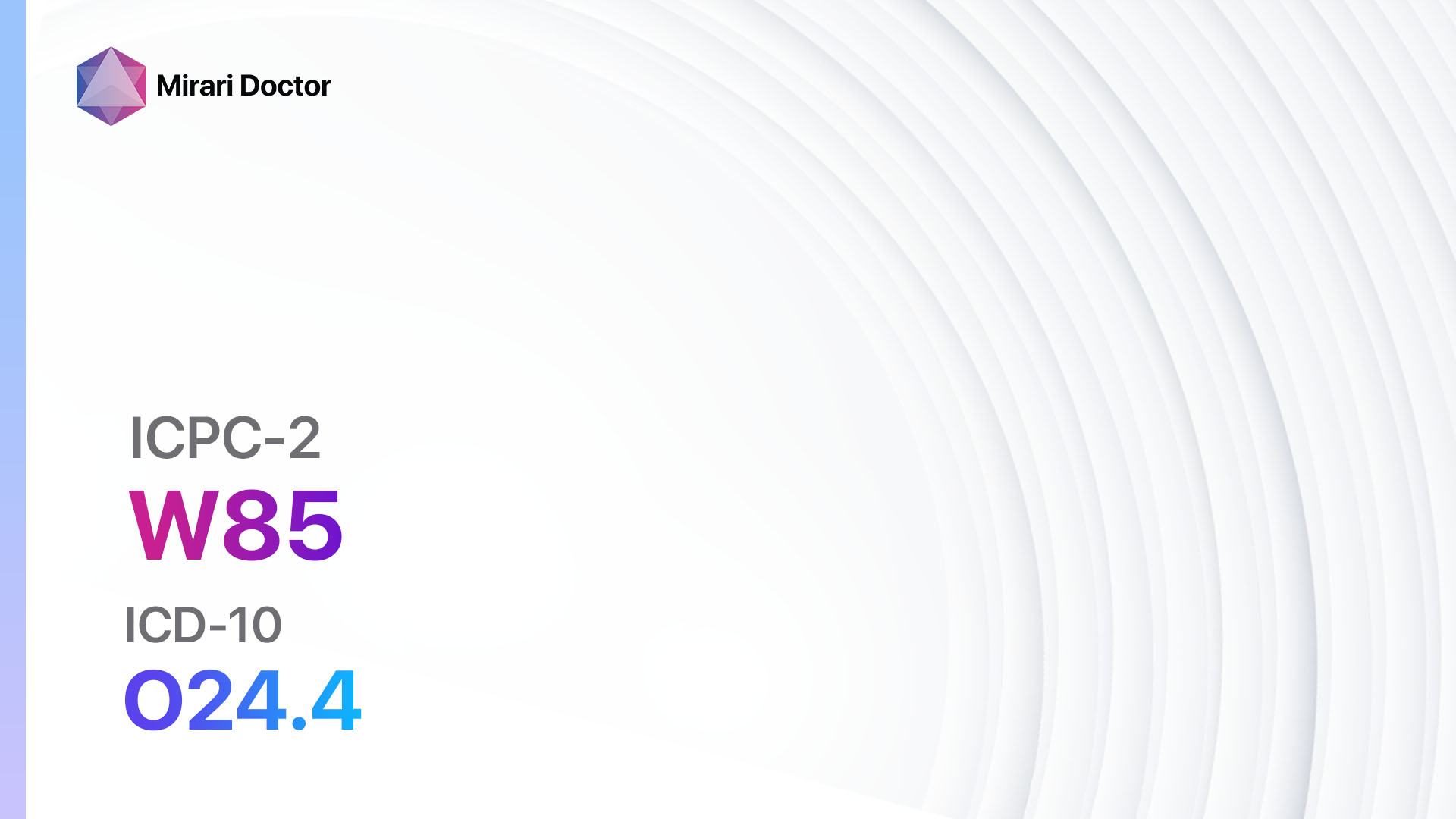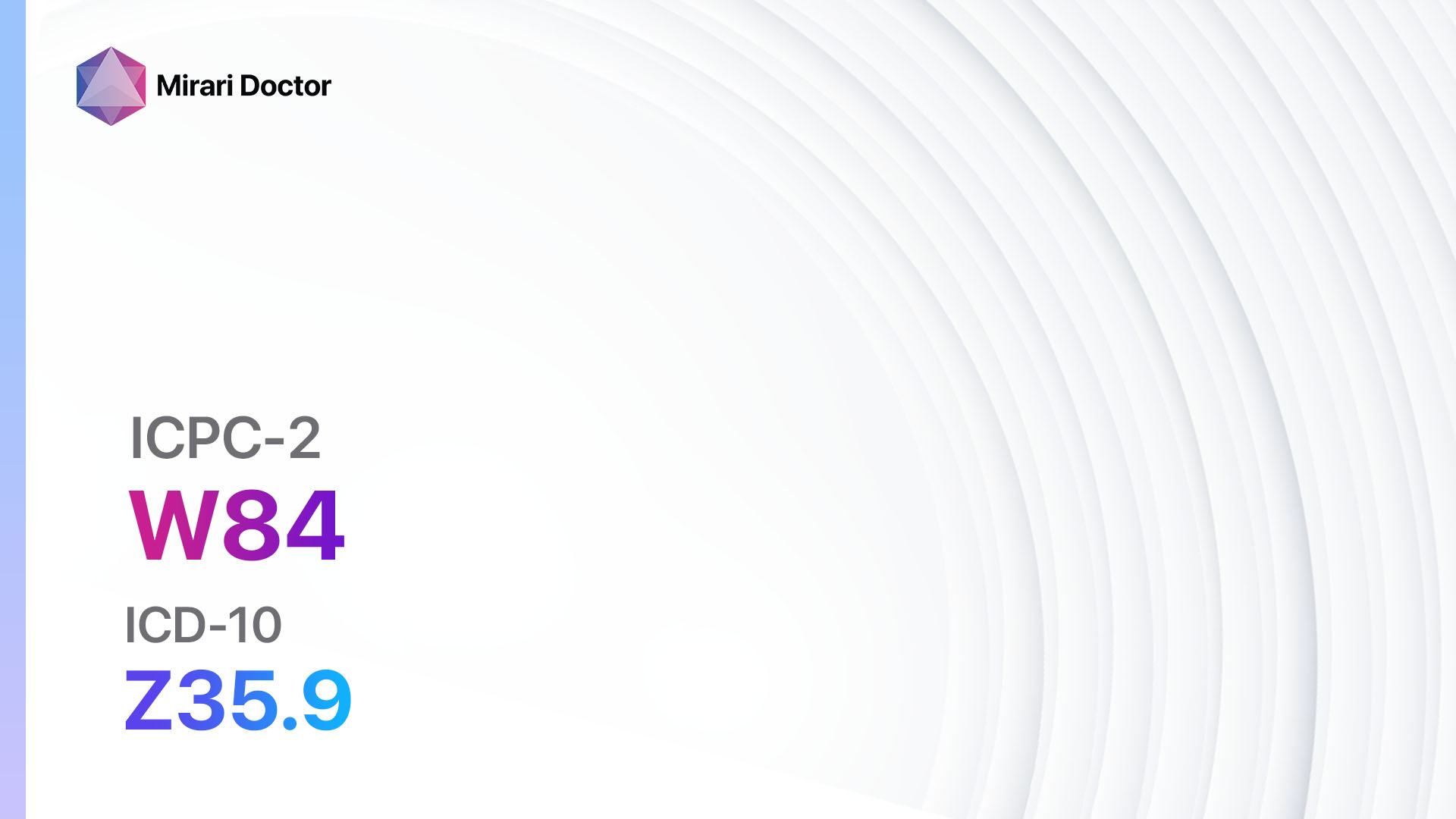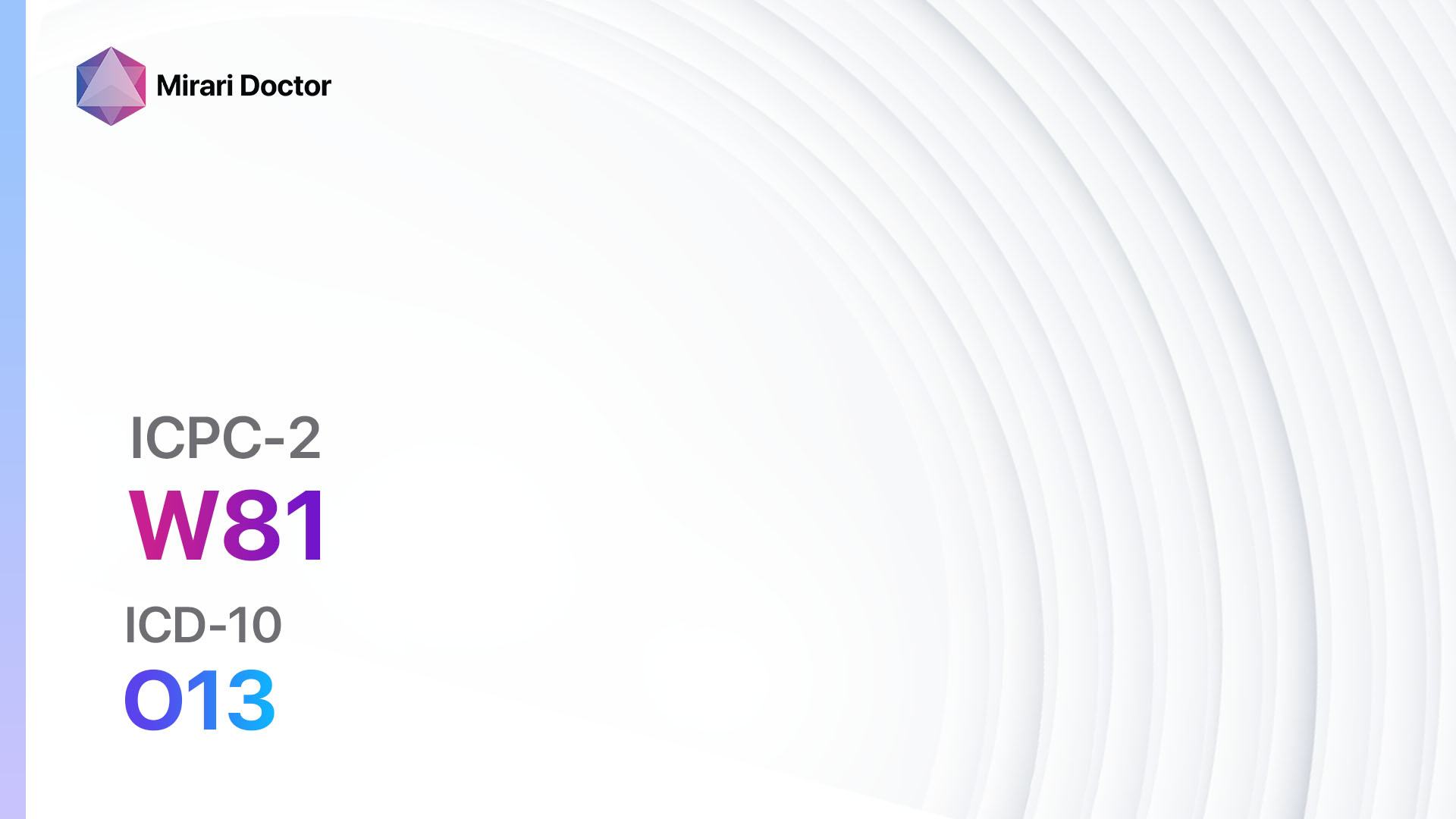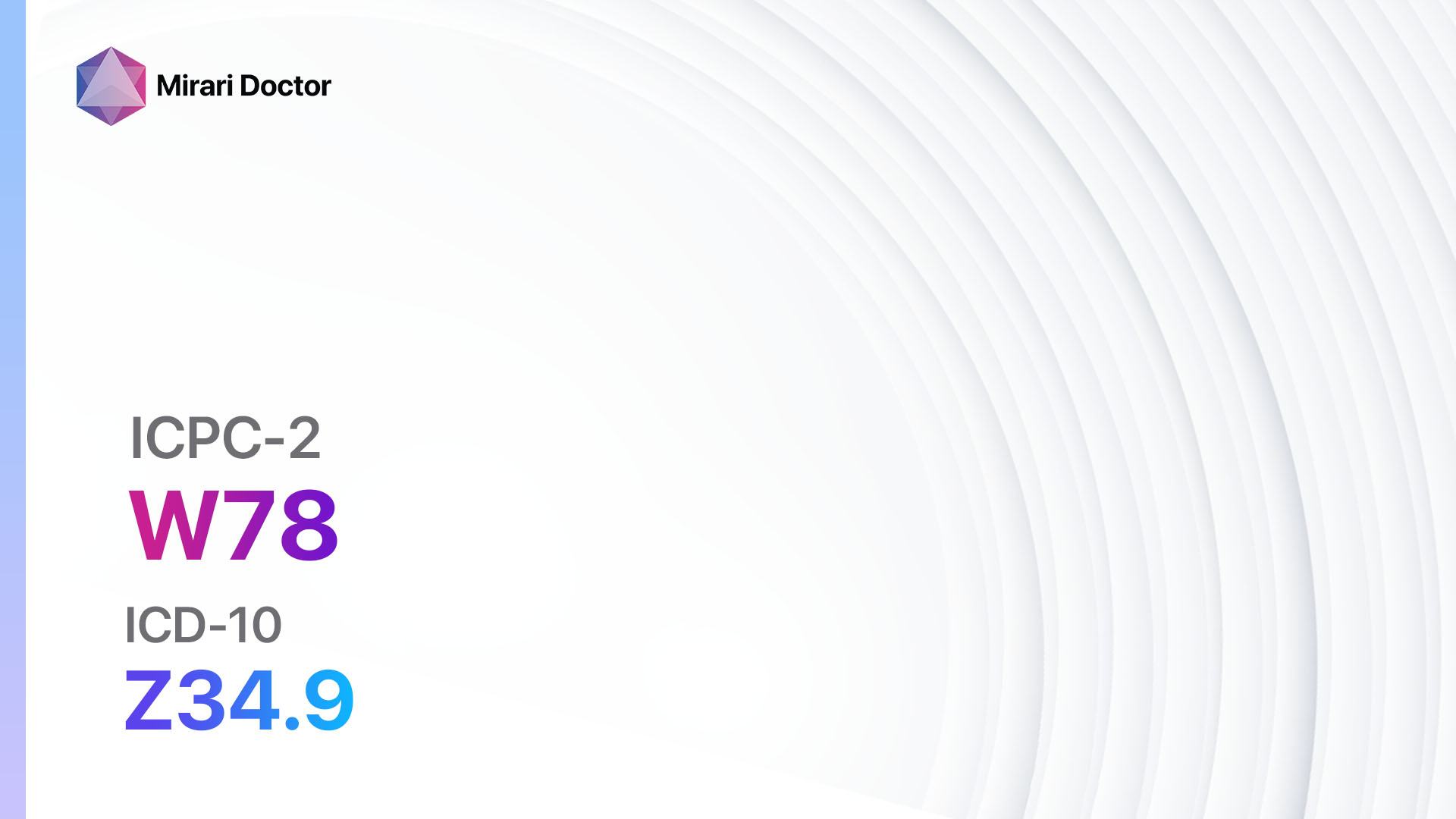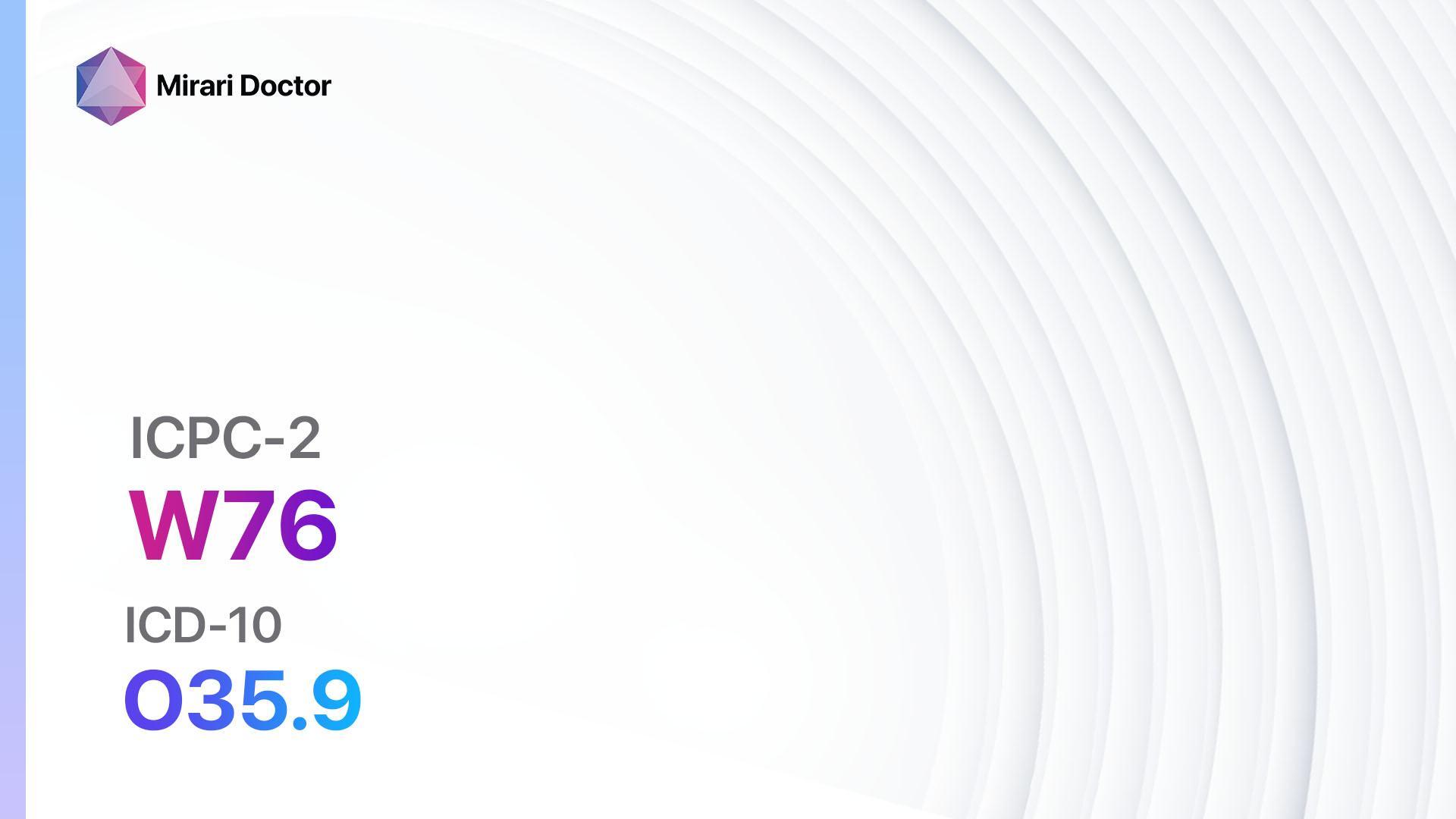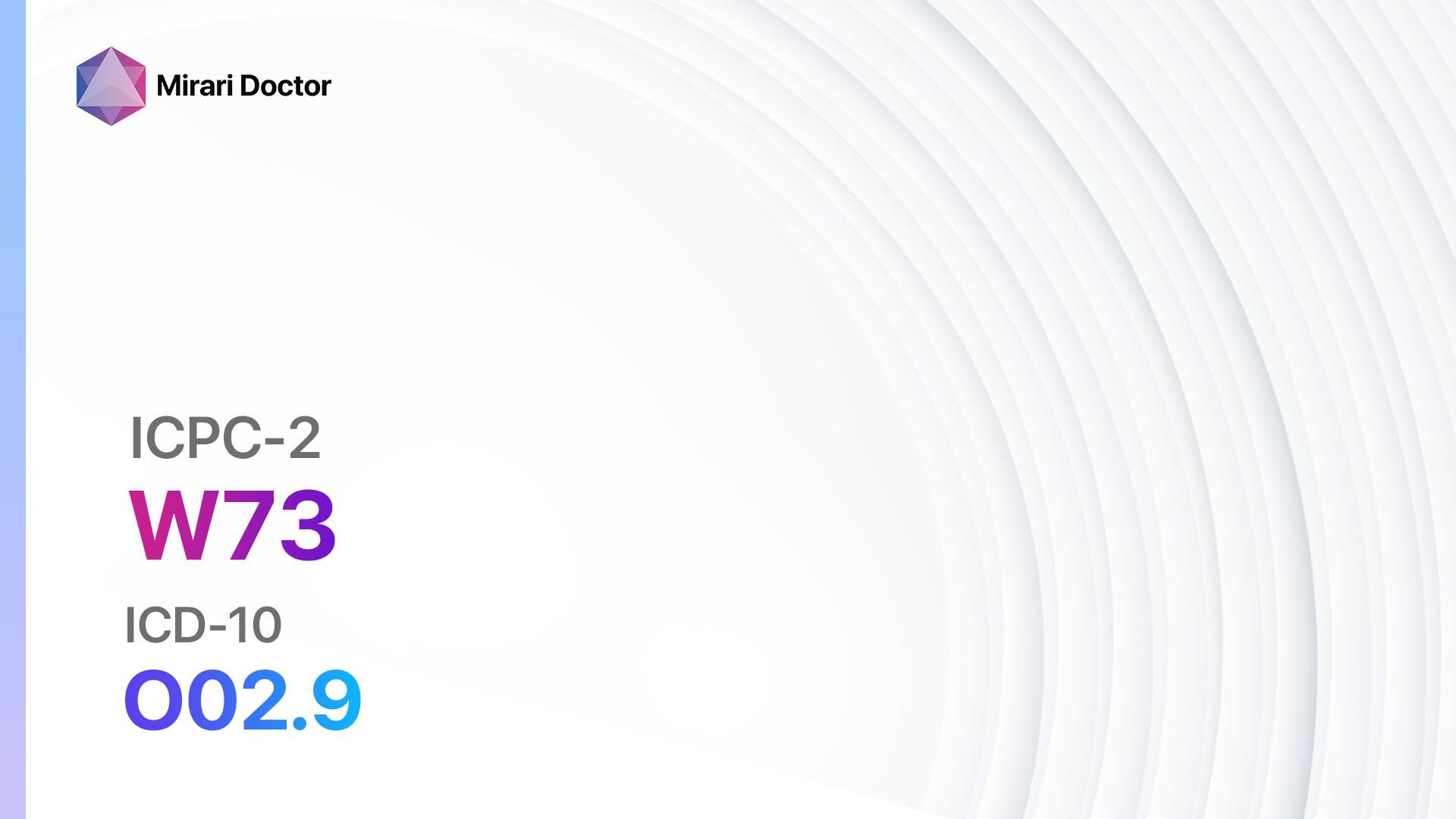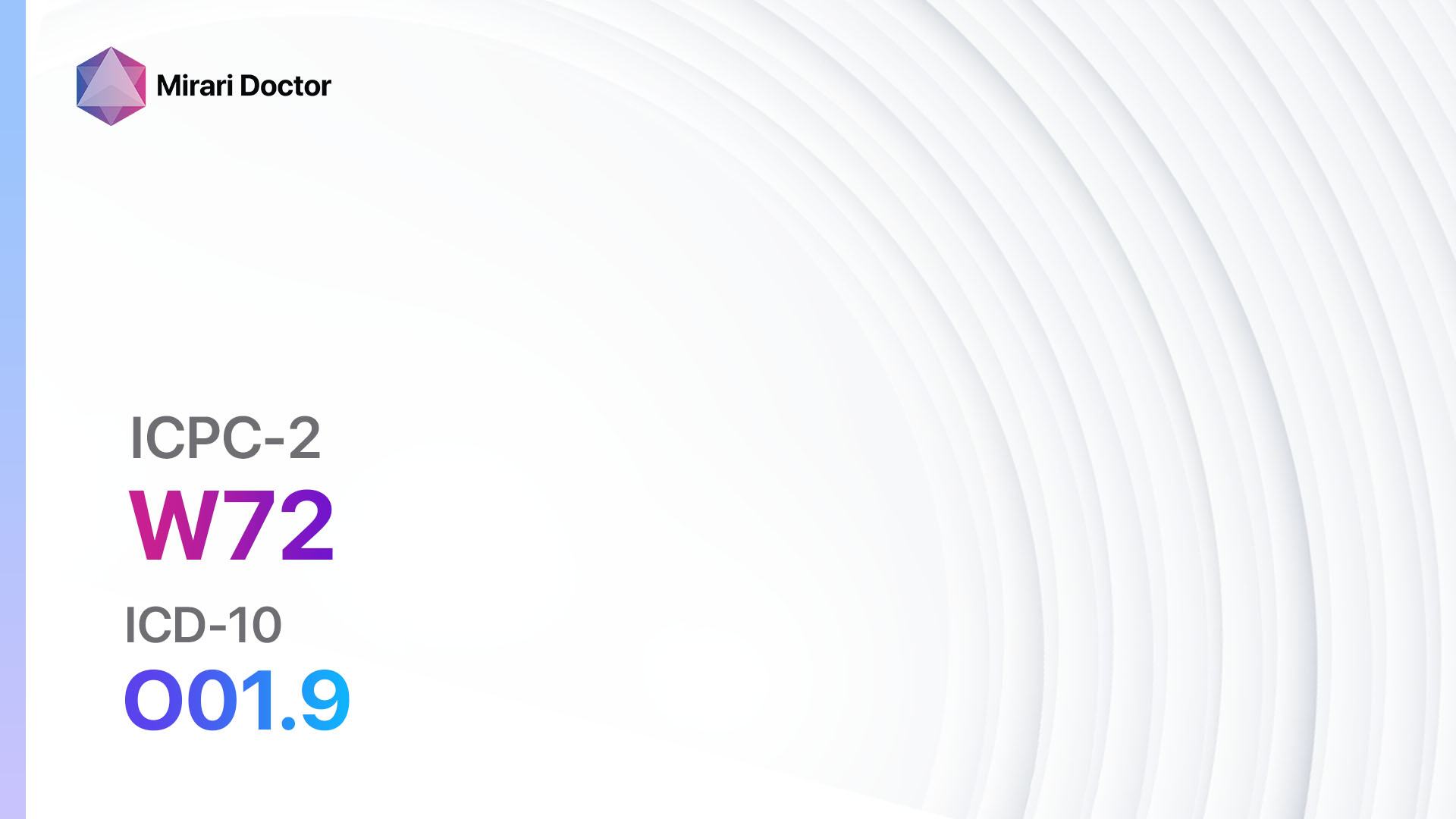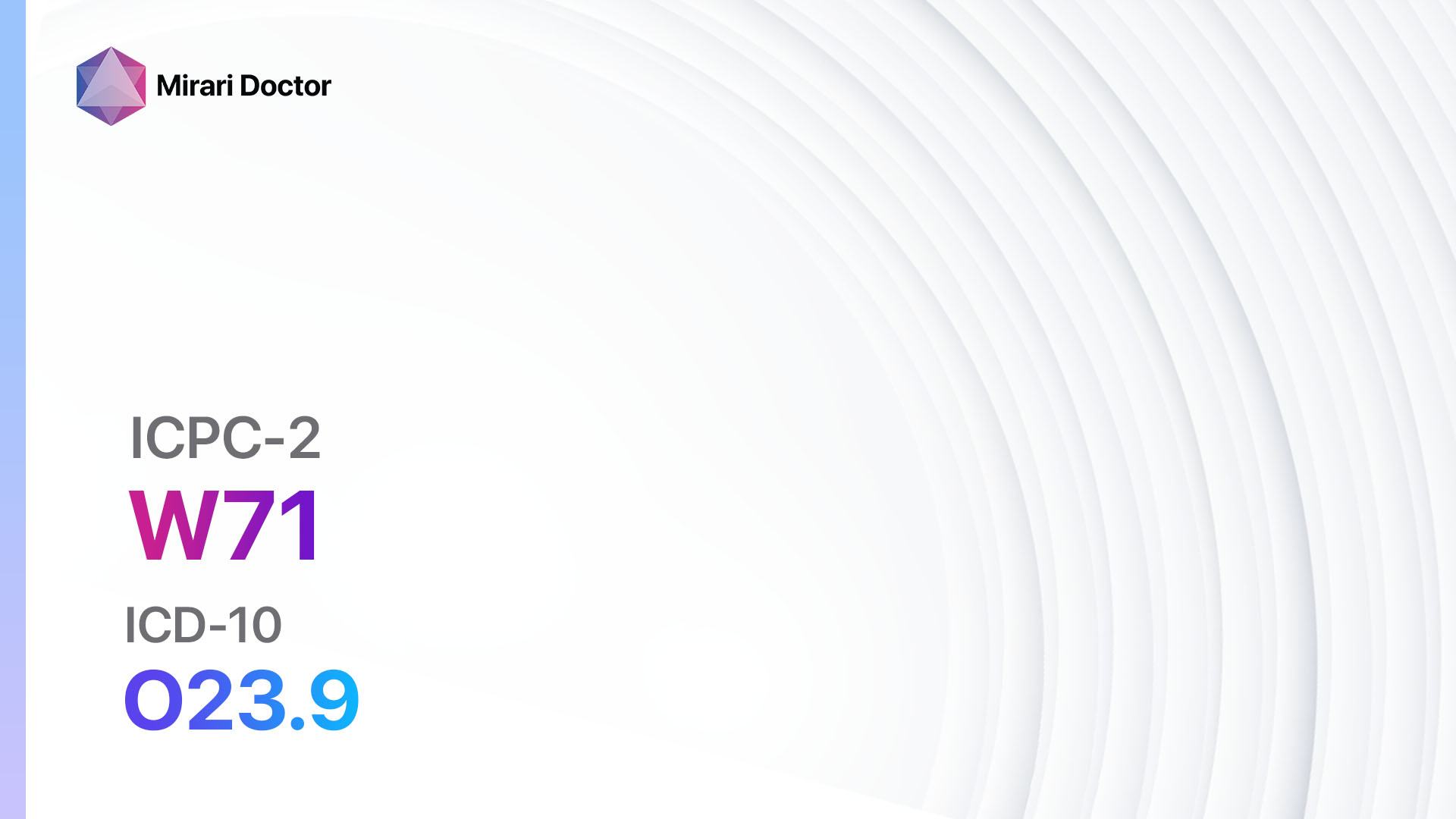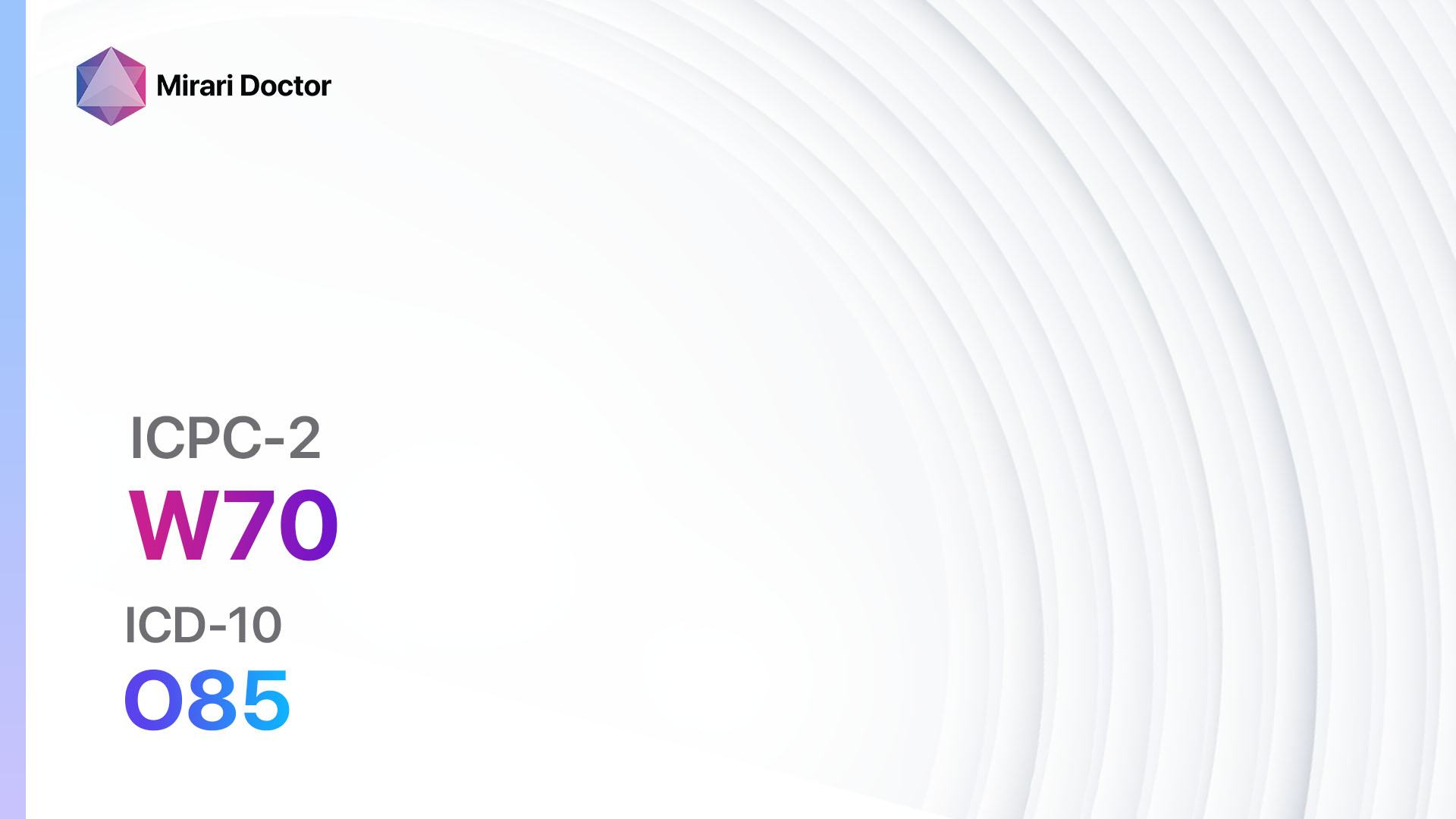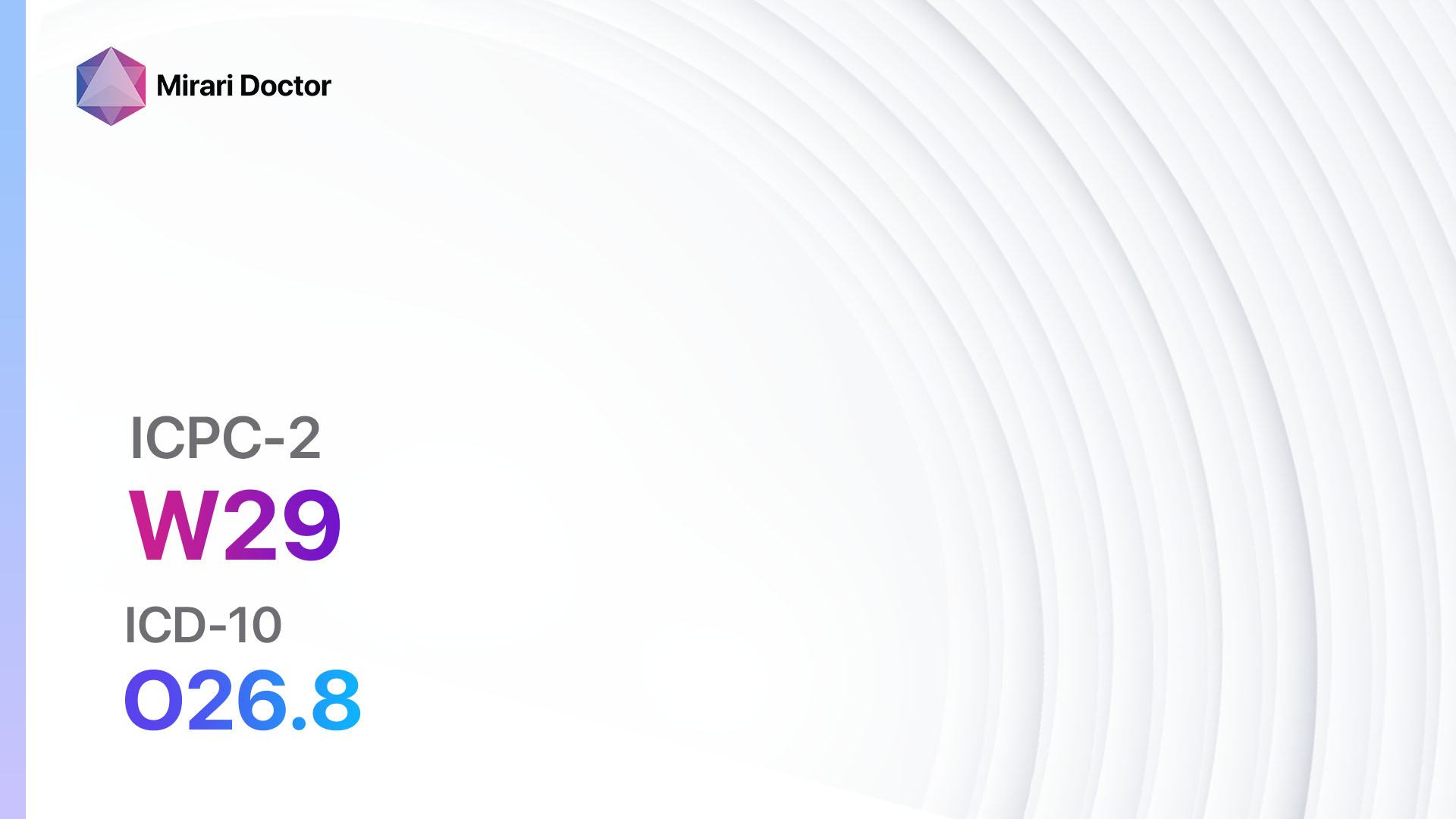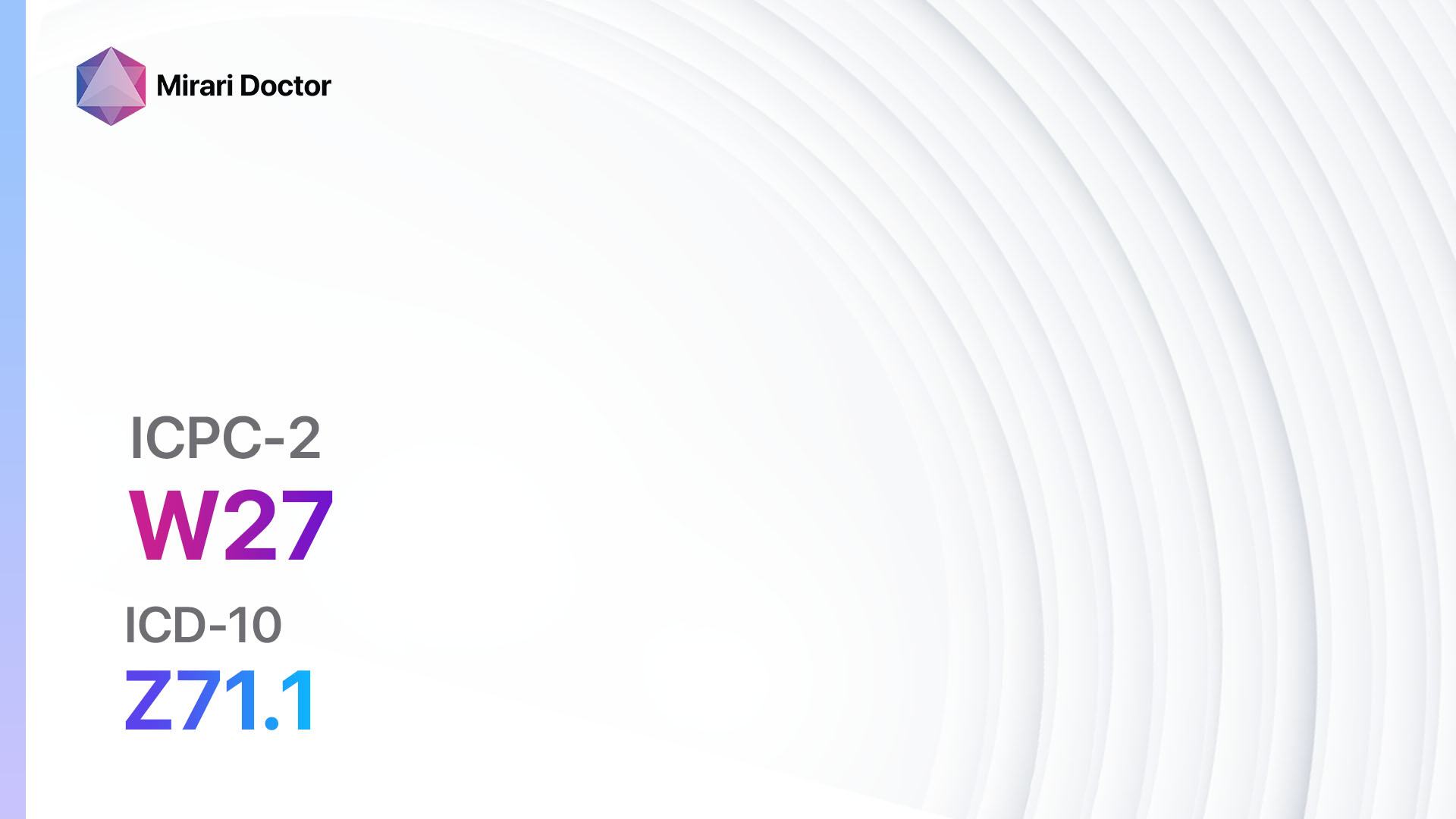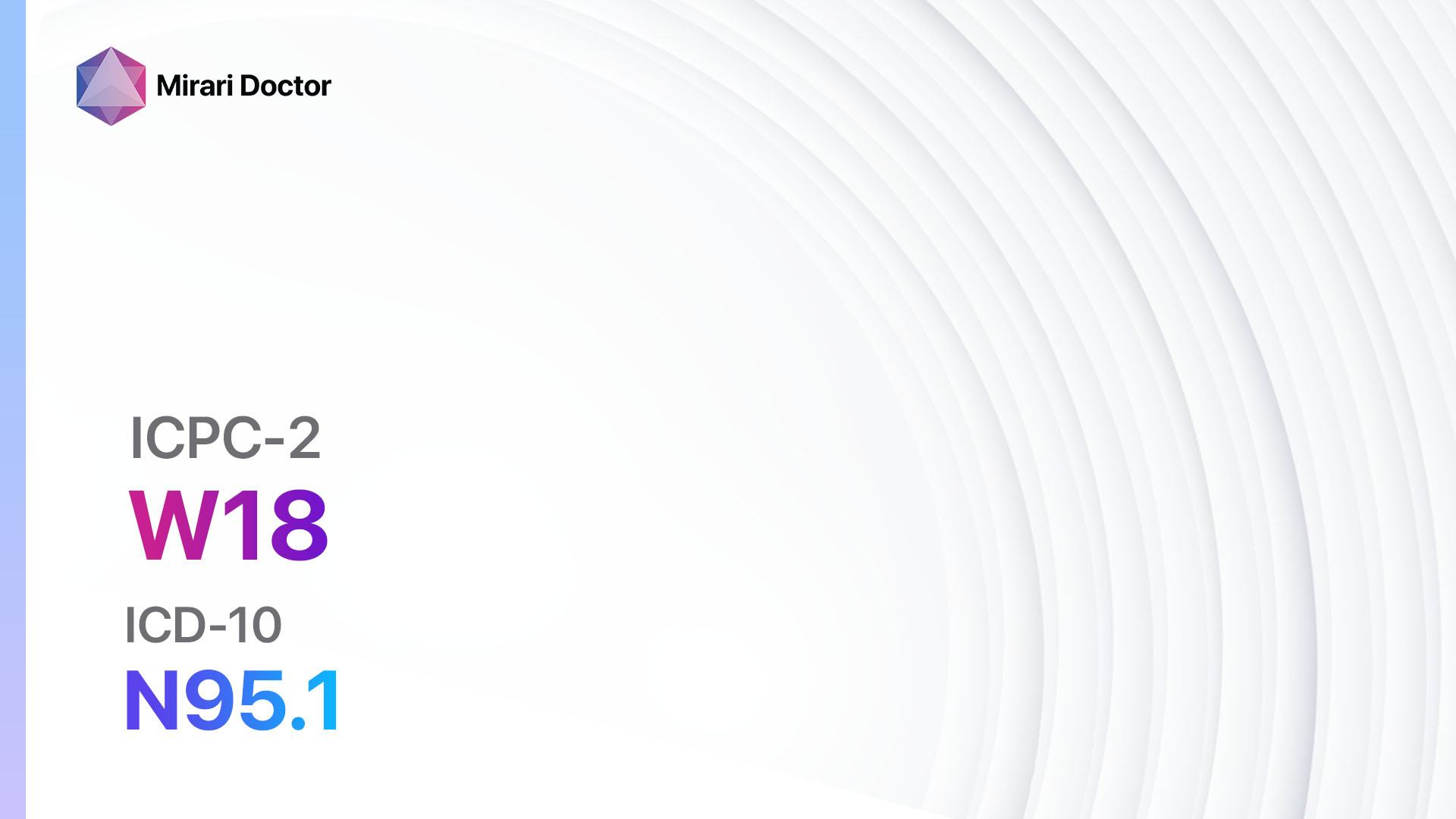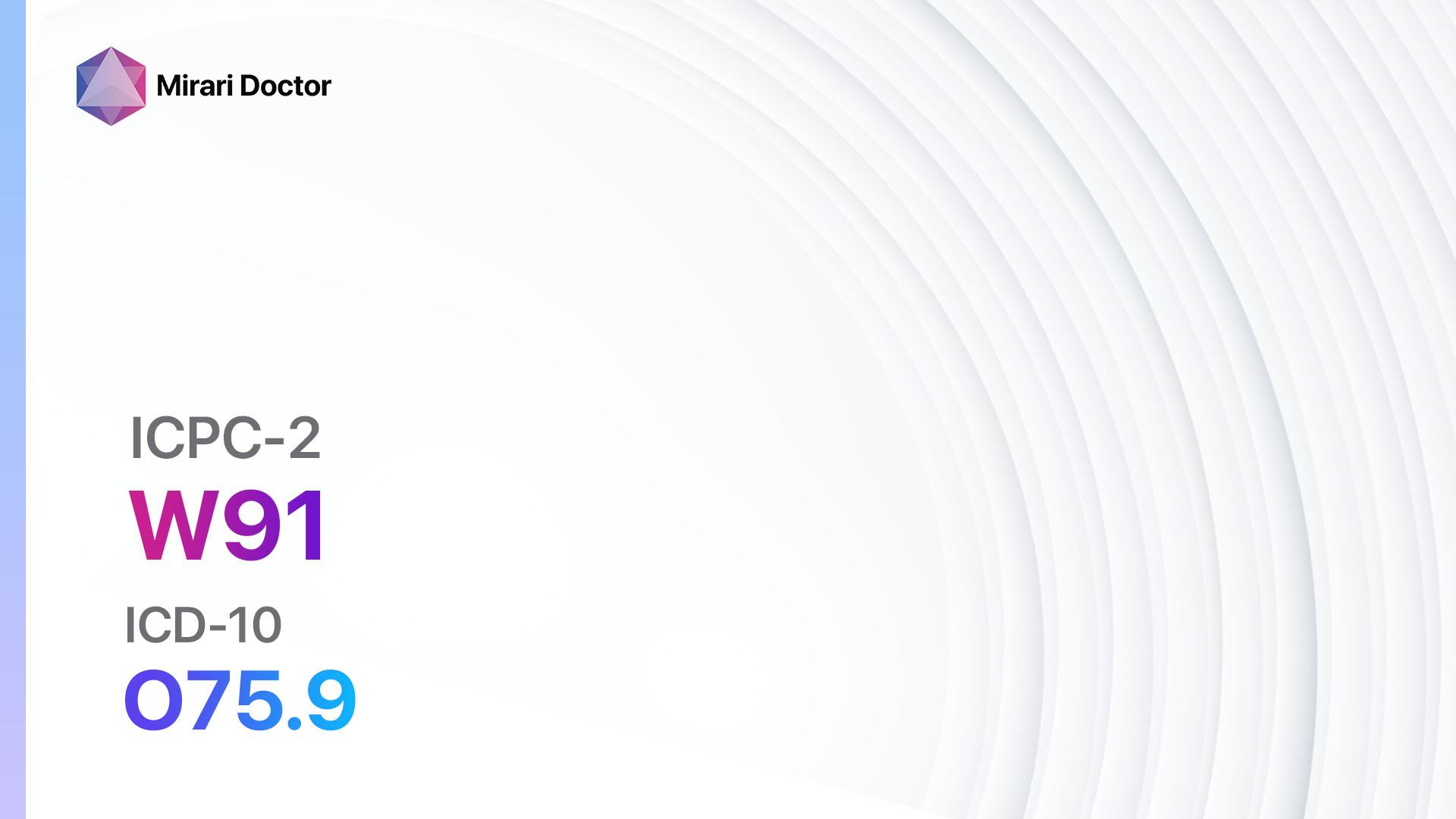
Introduction
Uncomplicated labour/delivery still refers to a normal and uncomplicated childbirth process. This guide aims to provide healthcare professionals with a comprehensive understanding of the condition, its symptoms, causes, diagnostic steps, possible interventions, and patient education.
Codes
- ICPC-2 Code: W91 Complicated labour/delivery live[1]
- ICD-10 Code: O75.9 Complication of labour and delivery, unspecified[2]
Symptoms
- Regular contractions: Contractions that occur at regular intervals and increase in intensity.
- Rupture of membranes: Breaking of the amniotic sac, leading to the release of amniotic fluid.
- Cervical dilation: Gradual opening of the cervix to allow the passage of the baby.[3]
Causes
- Natural progression of pregnancy: Labour and delivery are natural processes that occur as a result of the completion of a full-term pregnancy.
- Hormonal changes: The release of hormones, such as oxytocin, triggers contractions and initiates the labour process[4].
Diagnostic Steps
Medical History
- Gather information about the patient’s gestational age and estimated due date.
- Assess the patient’s overall health and any pre-existing medical conditions.
- Identify any risk factors for complications during labour and delivery, such as previous cesarean section or high-risk pregnancy[5].
Physical Examination
- Perform a pelvic examination to assess cervical dilation, effacement, and station.
- Monitor vital signs, including blood pressure, heart rate, and temperature.
- Assess fetal heart rate and position[6].
Laboratory Tests
- Complete blood count (CBC): To assess hemoglobin levels and detect any signs of infection.
- Urinalysis: To check for urinary tract infections or other abnormalities.
- Group B Streptococcus (GBS) screening: To determine if the patient is a carrier of GBS, which can affect the newborn[7].
Diagnostic Imaging
- Ultrasound: To assess fetal position, growth, and well-being.
- Non-stress test: To monitor fetal heart rate and movement.[8]
Other Tests
- Fetal monitoring: Continuous monitoring of the fetal heart rate during labour.
- Amniotic fluid analysis: To check for meconium staining or infection.[9]
Follow-up and Patient Education
- Schedule regular prenatal visits to monitor the progress of labour and delivery.
- Educate the patient about the signs of labour and when to seek medical assistance.
- Provide information on pain management options and childbirth preparation classes.[10]
Possible Interventions
Traditional Interventions
Medications:
Top 5 drugs for Uncomplicated labour/delivery still:
- Oxytocin:
- Cost: Varies depending on the healthcare setting.
- Contraindications: Hypersensitivity to oxytocin, fetal distress, abnormal fetal presentation.
- Side effects: Uterine hyperstimulation, water intoxication.
- Severe side effects: Uterine rupture, severe allergic reactions.
- Drug interactions: Nonsteroidal anti-inflammatory drugs (NSAIDs), vasopressors.
- Warning: Requires close monitoring of uterine contractions and fetal heart rate.
- Analgesics (e.g., opioids):
- Cost: Varies depending on the specific medication and healthcare setting.
- Contraindications: Allergy to opioids, respiratory depression, preterm labour.
- Side effects: Sedation, nausea, constipation.
- Severe side effects: Respiratory depression, hypotension.
- Drug interactions: Other central nervous system depressants, monoamine oxidase inhibitors (MAOIs).
- Warning: May cause neonatal respiratory depression if administered close to delivery.
- Nonsteroidal anti-inflammatory drugs (NSAIDs):
- Cost: Varies depending on the specific medication and healthcare setting.
- Contraindications: Allergy to NSAIDs, active peptic ulcer disease, bleeding disorders.
- Side effects: Gastric irritation, renal impairment, increased bleeding risk.
- Severe side effects: Gastrointestinal bleeding, renal failure.
- Drug interactions: Anticoagulants, corticosteroids.
- Warning: Avoid use in the third trimester due to potential effects on fetal circulation.
- Local anesthetics (e.g., lidocaine):
- Cost: Varies depending on the specific medication and healthcare setting.
- Contraindications: Allergy to local anesthetics, infection at the injection site.
- Side effects: Localized numbness, temporary motor weakness.
- Severe side effects: Allergic reactions, systemic toxicity.
- Drug interactions: None significant.
- Warning: Requires proper administration technique to prevent systemic toxicity.
- Antibiotics (e.g., penicillin):
- Cost: Varies depending on the specific medication and healthcare setting.
- Contraindications: Allergy to antibiotics, previous anaphylactic reaction to penicillin.
- Side effects: Allergic reactions, gastrointestinal upset.
- Severe side effects: Anaphylaxis, Clostridium difficile infection.
- Drug interactions: None significant.
- Warning: Administered prophylactically in cases of Group B Streptococcus colonization.
Surgical Procedures:
- Cesarean section: Surgical delivery of the baby through an incision in the abdomen and uterus. Cost: $20,000 to $50,000.
- Episiotomy: Surgical incision made in the perineum to enlarge the vaginal opening. Cost: $1,000 to $3,000.
Alternative Interventions
- Water immersion: Immersing the body in warm water during labour to promote relaxation and pain relief. Cost: Varies depending on the availability of birthing pools or tubs.
- Acupuncture: The insertion of thin needles into specific points on the body to alleviate pain and promote relaxation. Cost: $60-$120 per session.
- Hypnotherapy: The use of hypnosis techniques to manage pain and reduce anxiety during labour. Cost: $100-$200 per session.
- Massage therapy: The application of manual pressure and manipulation of muscles to relieve tension and promote relaxation. Cost: $60-$120 per session.
- Breathing techniques: Teaching the patient various breathing exercises to manage pain and promote relaxation. Cost: No additional cost.
Lifestyle Interventions
- Exercise and movement: Encouraging the patient to engage in regular physical activity and change positions during labour to promote progress and pain relief. Cost: No additional cost.
- Hydrotherapy: Using water therapy, such as showers or baths, to alleviate pain and promote relaxation during labour. Cost: Varies depending on the availability of facilities.
- Meditation and mindfulness: Teaching the patient techniques to focus the mind and reduce anxiety during labour. Cost: No additional cost.
- Music therapy: Playing soothing music to create a calming environment and distract from pain during labour. Cost: No additional cost.
- Birth ball: Using an exercise ball to sit or lean on during labour to promote comfort and progress. Cost: $20-$50.
It is important to note that the cost ranges provided are approximate and may vary depending on the location and availability of the interventions.
Mirari Cold Plasma Alternative Intervention
Understanding Mirari Cold Plasma
- Safe and Non-Invasive Treatment: Mirari Cold Plasma is a safe and non-invasive treatment option for various skin conditions. It does not require incisions, minimizing the risk of scarring, bleeding, or tissue damage.
- Efficient Extraction of Foreign Bodies: Mirari Cold Plasma facilitates the removal of foreign bodies from the skin by degrading and dissociating organic matter, allowing easier access and extraction.
- Pain Reduction and Comfort: Mirari Cold Plasma has a local analgesic effect, providing pain relief during the treatment, making it more comfortable for the patient.
- Reduced Risk of Infection: Mirari Cold Plasma has antimicrobial properties, effectively killing bacteria and reducing the risk of infection.
- Accelerated Healing and Minimal Scarring: Mirari Cold Plasma stimulates wound healing and tissue regeneration, reducing healing time and minimizing the formation of scars.
Mirari Cold Plasma Prescription
Video instructions for using Mirari Cold Plasma Device – W91 Complicated labour/delivery live (ICD-10:O75.9)
| Mild | Moderate | Severe |
| Mode setting: 1 (Infection) Location: 2 (Prostate & Uterus) Morning: 15 minutes, Evening: 15 minutes |
Mode setting: 1 (Infection) Location: 2 (Prostate & Uterus) Morning: 30 minutes, Lunch: 30 minutes, Evening: 30 minutes |
Mode setting: 1 (Infection) Location: 2 (Prostate & Uterus) Morning: 30 minutes, Lunch: 30 minutes, Evening: 30 minutes |
| Mode setting: 2 (Wound Healing) Location: 2 (Prostate & Uterus) Morning: 15 minutes, Evening: 15 minutes |
Mode setting: 2 (Wound Healing) Location: 2 (Prostate & Uterus) Morning: 30 minutes, Lunch: 30 minutes, Evening: 30 minutes |
Mode setting: 2 (Wound Healing) Location: 2 (Prostate & Uterus) Morning: 30 minutes, Lunch: 30 minutes, Evening: 30 minutes |
| Mode setting: 7 (Immunotherapy) Location: 1 (Sacrum) Morning: 15 minutes, Evening: 15 minutes |
Mode setting: 7 (Immunotherapy) Location: 1 (Sacrum) Morning: 30 minutes, Lunch: 30 minutes, Evening: 30 minutes |
Mode setting: 7 (Immunotherapy) Location: 1 (Sacrum) Morning: 30 minutes, Lunch: 30 minutes, Evening: 30 minutes |
| Total Morning: 45 minutes approx. $7.50 USD, Evening: 45 minutes approx. $7.50 USD |
Total Morning: 90 minutes approx. $15 USD, Lunch: 90 minutes approx. $15 USD, Evening: 90 minutes approx. $15 USD |
Total Morning: 90 minutes approx. $15 USD, Lunch: 90 minutes approx. $15 USD, Evening: 90 minutes approx. $15 USD |
| Usual treatment for 7-60 days approx. $105 USD – $900 USD | Usual treatment for 6-8 weeks approx. $1,890 USD – $2,520 USD |
Usual treatment for 3-6 months approx. $4,050 USD – $8,100 USD
|
 |
|
Use the Mirari Cold Plasma device to treat Uncomplicated labour/delivery still effectively.
WARNING: MIRARI COLD PLASMA IS DESIGNED FOR THE HUMAN BODY WITHOUT ANY ARTIFICIAL OR THIRD PARTY PRODUCTS. USE OF OTHER PRODUCTS IN COMBINATION WITH MIRARI COLD PLASMA MAY CAUSE UNPREDICTABLE EFFECTS, HARM OR INJURY. PLEASE CONSULT A MEDICAL PROFESSIONAL BEFORE COMBINING ANY OTHER PRODUCTS WITH USE OF MIRARI.
Step 1: Cleanse the Skin
- Start by cleaning the affected area of the skin with a gentle cleanser or mild soap and water. Gently pat the area dry with a clean towel.
Step 2: Prepare the Mirari Cold Plasma device
- Ensure that the Mirari Cold Plasma device is fully charged or has fresh batteries as per the manufacturer’s instructions. Make sure the device is clean and in good working condition.
- Switch on the Mirari device using the power button or by following the specific instructions provided with the device.
- Some Mirari devices may have adjustable settings for intensity or treatment duration. Follow the manufacturer’s instructions to select the appropriate settings based on your needs and the recommended guidelines.
Step 3: Apply the Device
- Place the Mirari device in direct contact with the affected area of the skin. Gently glide or hold the device over the skin surface, ensuring even coverage of the area experiencing.
- Slowly move the Mirari device in a circular motion or follow a specific pattern as indicated in the user manual. This helps ensure thorough treatment coverage.
Step 4: Monitor and Assess:
- Keep track of your progress and evaluate the effectiveness of the Mirari device in managing your Uncomplicated labour/delivery still. If you have any concerns or notice any adverse reactions, consult with your health care professional.
Note
This guide is for informational purposes only and should not replace the advice of a medical professional. Always consult with your healthcare provider or a qualified medical professional for personal advice, diagnosis, or treatment. Do not solely rely on the information presented here for decisions about your health. Use of this information is at your own risk. The authors of this guide, nor any associated entities or platforms, are not responsible for any potential adverse effects or outcomes based on the content.
Mirari Cold Plasma System Disclaimer
- Purpose: The Mirari Cold Plasma System is a Class 2 medical device designed for use by trained healthcare professionals. It is registered for use in Thailand and Vietnam. It is not intended for use outside of these locations.
- Informational Use: The content and information provided with the device are for educational and informational purposes only. They are not a substitute for professional medical advice or care.
- Variable Outcomes: While the device is approved for specific uses, individual outcomes can differ. We do not assert or guarantee specific medical outcomes.
- Consultation: Prior to utilizing the device or making decisions based on its content, it is essential to consult with a Certified Mirari Tele-Therapist and your medical healthcare provider regarding specific protocols.
- Liability: By using this device, users are acknowledging and accepting all potential risks. Neither the manufacturer nor the distributor will be held accountable for any adverse reactions, injuries, or damages stemming from its use.
- Geographical Availability: This device has received approval for designated purposes by the Thai and Vietnam FDA. As of now, outside of Thailand and Vietnam, the Mirari Cold Plasma System is not available for purchase or use.
References
- WONCA International Classification Committee. (2005). ICPC-2: International Classification of Primary Care. Oxford University Press.
- World Health Organization. (2019). ICD-10: International Statistical Classification of Diseases and Related Health Problems, 10th Revision.
- American College of Obstetricians and Gynecologists. (2019). ACOG Practice Bulletin No. 205: Vaginal Birth After Cesarean Delivery. Obstetrics & Gynecology, 133(2), e110-e127.
- Cunningham, F. G., Leveno, K. J., Bloom, S. L., Spong, C. Y., Dashe, J. S., Hoffman, B. L., … & Sheffield, J. S. (2018). Williams Obstetrics, 25e. McGraw-Hill Education.
- National Institute for Health and Care Excellence. (2017). Intrapartum care for healthy women and babies. Clinical guideline [CG190].
- American Academy of Pediatrics & American College of Obstetricians and Gynecologists. (2017). Guidelines for Perinatal Care, 8th Edition. Elk Grove Village, IL: AAP; Washington, DC: ACOG.
- Lockwood, C. J., & Magriples, U. (2020). Prenatal care: Initial assessment. UpToDate. Retrieved from https://www.uptodate.com/contents/prenatal-care-initial-assessment
- Society for Maternal-Fetal Medicine. (2019). SMFM Consult Series #47: Fetal growth restriction. American Journal of Obstetrics and Gynecology, 221(4), B2-B19.
- American College of Obstetricians and Gynecologists. (2020). ACOG Practice Bulletin No. 217: Prelabor Rupture of Membranes. Obstetrics & Gynecology, 135(3), e80-e97.
- Lothian, J. A. (2014). Healthy birth practice #4: Avoid interventions unless they are medically necessary. The Journal of Perinatal Education, 23(4), 198-206.
Related articles
Made in USA


